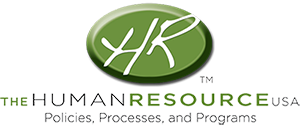Your Talent Isn’t the Problem, But Your Process Might Be
Your Talent Isn’t the Problem, But Your Process Might Be
.png)
You’ve been scouring the market for months. Spent countless hours performing interviews. You’ve spent a lot of money to make sure you hired the right person for the role. And now, the offer’s signed, the seat’s filled.... And the ball is about to be dropped. But not by the new hire; by your own processes.
If your onboarding process and employee development strategy are underdeveloped or missing, you’ve essentially wasted your own time, money, and employee goodwill. Even the most capable new hires can’t deliver results without structure behind them and guidance ahead of them. And structure and guidance do not mean a rushed orientation and a copy of the handbook.
They’re busy. They do their best. But without a system, everything runs on assumptions. Managers assume employees will speak up. Employees assume they’re already supposed to know. By the time performance dips, trust already has. That’s not a people problem; it’s an operational one.
This blog will break down what a functional onboarding and training plan looks like—one that builds clarity early, reinforces it often, and actually supports long-term success. We’ll highlight the common gaps, the costs of ignoring them, and how our team at The Human Resource USA helps organizations build something more sustainable.
Why Onboarding Sets the Tone and Often Falls Short

Onboarding gives your new employees a sense of value, direction, and stability right out of the gate. And it tells new employees everything they need to know about how seriously the organization takes its own standards.
If the process is thoughtful, structured, and clear, they notice. If it’s rushed, scattered, or incomplete, they notice that, too. Either way, the message is received.
New hires start forming long-term opinions fast. 86% of new hires decide within the first six months whether they’re going to stay. And yet, 72% of companies onboard for less than a month, with more than half wrapping it up in a week or less. That kind of timeline doesn't set people up for clarity. It sets them up for guesswork.
The early days of employment reveal more than policies and procedures. They show people what to expect from leadership, how communication actually works, and how much support they'll be getting when things aren't obvious. How you handle someone’s first few days reflects how you handle everything else.
What a Strong Onboarding Program Includes
A strong onboarding process includes orientation, but it also goes deeper. It gives employees access to the systems and tools they’ll need, introduces team dynamics and communication norms, and places clear focus on role expectations. That means reviewing what’s actually required in the position, not what was listed five years ago when the job description was last updated. When people understand what’s expected of them, they start with purpose. A personalized 30-60-90 day plan builds on that by breaking goals into manageable phases and reinforcing progress as it happens.
Each phase should deliver something tangible. Early clarity. A sense of direction. Some initial wins. And, just as importantly, connection. That happens through consistent manager engagement, scheduled check-ins, and small touchpoints that reinforce expectations before confusion has a chance to take hold.
It’s not about dumping more information. It’s about providing the right support, at the right time, in a way that sticks.
Common Onboarding Mistakes

Onboarding goes sideways when it’s treated like a task to finish instead of a system to lead with.
Problems start when the process is crammed into a single day. Or when it covers company policies but skips over what success actually looks like in the role. Support disappears once orientation ends. Managers assume new hires will ask if something’s unclear. But most of the time, they won’t.
These oversights are subtle. They don't cause blowups; they cause drift. Over time, that drift creates a gap in trust, performance, and retention.
Why Training Should Be Treated as a Core Business Function
Training your people isn’t for the sake of company culture. People aren’t hired just to understand the company mission statement, so don’t stop there.
Training is one of the most overlooked systems in a workplace, and one of the most operationally significant. It’s what allows employees to perform with consistency, confidence, and accuracy. When that system is missing, people are left to guess. And when enough people are guessing, performance starts to erode in ways that are easy to miss until they start costing time, money, or trust.
This part of the process often gets overlooked because it’s assumed someone, somewhere, is covering it. Maybe the manager is walking them through it. Maybe they’ll just pick it up as they go. But 59% of employees say they received no workplace training at all, and had to teach themselves how to do their job. That doesn’t just create confusion. It creates inconsistency, burnout, and rework.
Companies that invest in structured employee development see measurable improvements. 77% of employees who go through structured onboarding hit their performance goals faster. Organizations with strong learning cultures are 52% more productive. And when employees understand what to do and how to do it, they spend less time hesitating and more time producing.
Strong training programs reduce risk, increase consistency, and give teams the tools to maintain standards without micromanagement. They don’t just plug knowledge gaps. They create reliable, repeatable outcomes.
Building a Scalable, Effective Training Program
.png)
A strong employee training program starts with clarity. Learning goals should be specific, measurable, and tied directly to the responsibilities of the role. From there, employees need the opportunity to apply what they’re learning, not just sit through a presentation. That application builds confidence, reinforces accuracy, and shows what still needs work.
Good training programs are also designed to adapt. As roles change, tools evolve, or teams grow, training should shift along with them. This isn’t a one-time orientation or a static manual. It’s a system that’s built into the rhythm of how the organization operates.
Effective methods vary by team, but some of the most useful formats include microlearning, job shadowing, peer demonstrations, and internal coaching. When delivered with purpose, these approaches support real-time learning without overwhelming the person or the schedule.
Reinforcement matters just as much as instruction. Check-ins, refreshers, and feedback loops are what keep training relevant and actionable, long after the initial sessions are done.
What Organizations Often Miss in Training
Many teams value training in theory, but don’t have the structure to carry it through. Verbal instructions replace written documentation. Materials go out-of-date and stay that way. Too much information gets packed into the first week, with little follow-up once the employee is expected to perform.
Hands-on practice is another gap. New hires might be told what to do, but without space to try it—under guidance, with feedback—they’re left to improvise. That improvisation often leads to inconsistency, especially across departments or locations.
These aren’t unusual problems. They’re signs of a system that hasn’t been built yet. Most organizations want to provide effective employee development, but they need something they can maintain. That’s what makes the difference between good intentions and actual results.
What Consistent Onboarding and Training Really Deliver

When onboarding and training work together, employees start strong and stay capable. One provides structure. The other builds customized skill. Together, they shape how people contribute, how teams operate, and how long employees choose to stay.
These systems are the foundation for execution, alignment, and accountability. When employees understand what’s expected and have the tools to meet those expectations, performance improves. Turnover slows. Trust builds.
The business case speaks for itself. Companies with strong learning cultures are more productive and more likely to innovate. Structured onboarding shortens ramp-up time and leads to better retention. In fact, 60% of candidates evaluate the quality of onboarding when deciding whether to accept a role. This isn’t just about doing the right thing for your people—it’s about running a better operation.
The Human Resource USA Helps You Stop Losing Good People to Bad Processes
Most teams want to do right by their employees. The problem isn’t intent. It’s consistency. That’s where we come in.
The Human Resource USA created the HR Academy to help organizations build onboarding and training systems that actually work. Whether you need a starting point or a way to strengthen what’s already in place, the Academy meets you where you are.
You’ll find ready-to-use modules designed to support both managers and employees. The video library makes it easy to deliver core concepts in a way that sticks, and our planning support helps you tailor your approach to fit your culture, your goals, and your pace.
Better systems don’t have to be built from scratch. And they don’t have to be built alone. Contact us to get started.
